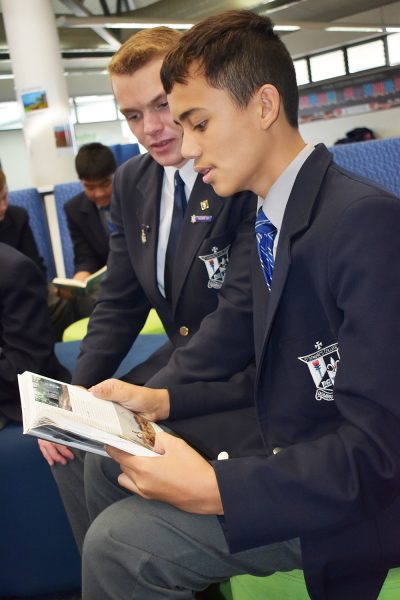From the Learning Team
 Term 2 began with a staff professional development day. The day had a number of focus areas for our staff PL. This included a launch and discussion around a renewed focus on Student Centred Learning. Whilst it is recognised a number of areas in the school already work in this area, it will become a bigger focus in the coming years. This includes the creation of a committee to investigate what Student Centred Learning could look like at the College and the creation of a St Dominic’s College Student Centred Learning Framework. The committee will begin working this year and continue the project over the coming years.
Term 2 began with a staff professional development day. The day had a number of focus areas for our staff PL. This included a launch and discussion around a renewed focus on Student Centred Learning. Whilst it is recognised a number of areas in the school already work in this area, it will become a bigger focus in the coming years. This includes the creation of a committee to investigate what Student Centred Learning could look like at the College and the creation of a St Dominic’s College Student Centred Learning Framework. The committee will begin working this year and continue the project over the coming years.
Another area of focus was on Literacy – staff engaged in a Literacy Workshop which was focused on the 12 effective reading strategies. These strategies are designed to assist our students in being more effective readers as a first step in improving writing. The 12 strategies are below for your information. We encourage you to discuss these with your son as part of his homework and assessment preparation.
- Finding the Main Idea – The main idea of a reading passage is a sentence that tells what the passage is mostly about. You can generally find the main idea in the first or last sentence of a passage.
- Recalling Facts and Details – Facts and details tell more about the main idea. Once you knows the main idea, you can find details that provide more information about that main idea.
- Understanding Sequencing – Most things you read are told in sequential order from first to last. You can find the sequence by looking at the order that information is presented in a text.
- Comparing and Contrasting – You can compare and contrast almost anything by thinking about how they are alike and how they are different. You can compare and contrast by thinking about the facts and details in the text.
- Recognising Cause and Effect – Cause and effect in a text is about what happens and why. To find cause and effect you need to think about what happened (the effect) and then find out why it happened (the cause).
- Making Predictions – A prediction is an educated guess based on information you already know or details you have already read. To make a prediction you can look at the facts and details in the text to give you clues about what may happen next.
- Finding Word Meaning in Context – Understanding word meaning in context works by using clues to find the meaning of a new word. These clues are often found in the sentence where the word is found, or the sentences prior or after and help us to figure out how the word is being used.
- Drawing Conclusions and Making Inferences – This involves us working out what is happening without being explicitly told. Drawing conclusions and making inferences is done by using the facts and details that we are told to fill in the blanks of what we would like to know.
- Distinguishing Between Fact and Opinion – Facts are something that can be checked and proven, opinions cannot be proven. Distinguishing between the two calls for you to ask yourself: can this statement be proven?
- Identifying Author’s Purpose – Authors always write for a reason: to entertain, inform or persuade. When looking for the authors purpose you can ask: what does the author want me to know? This provides clear clues as to the purpose.
- Interpreting Figurative Language – Figurative language is using words in a way that is different from what the words usually mean. We can interpret figurative language by using clues in the surrounding sentences to find the meaning of the word/phrase in context.
- Summarising – A summary is a short statement that tells the most important ideas. In reading or writing a summary you should be able to identify/articulate the main idea and the most important supporting facts and details.
Mr David Gerlach – Director of Teaching and Learning
Mr Luke Borg – Director of Curriculum
Ms Monica Day – Director of Diverse Learning and Acting Director of Pastoral Care









